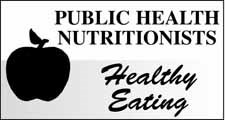For over 100 years, public health in Canada had been helping people take care of themselves, their families and communities. The major increase in life expectancy, overall health and quality of life that occurred in the twentieth century were the result of public health initiatives - making vaccines, clean water, pasteurization and better living conditions.
The understanding of what keeps people healthy has grown. At one time we thought that the answer was to treat people and cure disease. During the 1970's we began to understand that the foods we eat, how active we are and whether we smoke tobacco also affect how healthy we are. People were encouraged to reduce their health risks by changing their behaviour.
Today we recognize the picture is even bigger. It is no longer enough to simply tell people to exercise more, eat more fruit and vegetable and avoid tobacco. Knowing what to do does not translate into behaviour change. Creating environments where healthy behaviour is the norm supports healthier choices by individuals.
Some people face barriers to making healthy choices. They may not have enough income to purchase healthy foods; have enough education to get a job; live in a safe place or have support from family and friends. When people have money to buy vegetables and fruit; a safe place to walk near their home; can afford comfortable shoes and have friends who are active, they are far more likely to have good health and not get sick.
We can take action in many ways and in many places. In the 1950's many towns in Saskatchewan put in municipal water and sewage systems. Ensuring citizens had access to safe water and designing safe sewage disposal resulted in better living conditions and in turn better health. Today communities are looking at how design and policies can support health. Designing healthy communities includes looking at the placement of grocery stores, farmer's markets, parks, walking trails, access to public recreational facilities and public transportation. Polices that support the health of citizens include:Public places that are smoke-free and breastfeeding friendly.
Food choices offered in recreation facilities, schools and daycares.
Use of public funds to support cultural facilities and events.
Use of helmets when biking.
The true measure of a society is a healthy population. Canada Health Day provides the opportunity to celebrate the contributions of public health to the everyday lives of Canadians. It also is a day to reflect on the role that communities play in making it easier for people to live, work and play in healthy ways.
Written by the Public Health Nutritionists of Saskatchewan and supported by Public Health, Sunrise Health Region.
If you have any comments or questions please contact: Heather Torrie, Public Health Nutritionist, Sunrise Health Region, 150 Independent Street, Yorkton, Sask. S3N 0S7 or phone: 786-0600.




